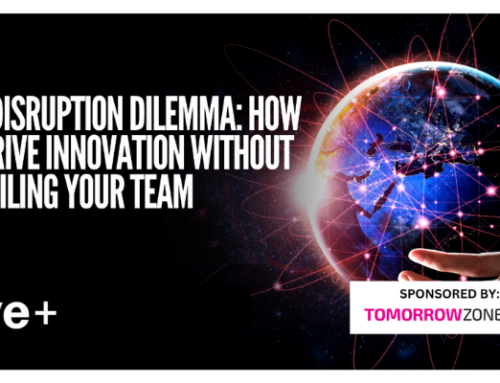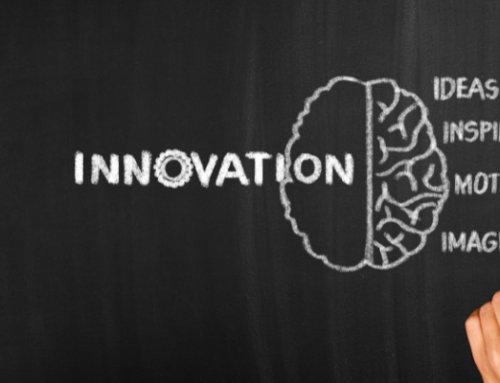June 12-14, I was part of the first annual CEMC Innovation Summit at the Ritz Carlton, Laguna Nigel, CA here are my takeaways from this thought provoking and inspiring event.

Charles Anderson, CEMC Founder, and CEO of Currency Capital shares opening remarks.
Innovation Starts with Two Words, “What if…”
What if we bring together a diverse group of thought leaders and challenge them to question everything about an industry? Charles Anderson, CEMC Founder, and CEO of Currency Capital, opened the first annual Commercial Equipment Marketplace Council Innovation Summit with a challenge to leaders in attendance. “You have three deliverables by the end of this conference.”
- Leave with a new perspective on customer experience
- Leave with at least one new relationship
- Leave with one wild disturbingly offensive idea
The unifying theme of the innovation summit was to think different, challenge the status quo, embrace innovation, and re-imagine the future of the industry. All speakers brought different perspectives that tied directly back to these themes.
Choose to Develop the Mindset for Innovation
Innovation is never only about technology, mindset plays a huge role in bringing new ideas to life.
Kicking off the event, Jeffrey Hayzlett shared his talk on, “Power of Innovation and Disruption.” It’s all about mindset. Leaders need to be relentless in adapting and changing. It is crucial to embrace the beginner mindset and overcome fear of failure. Failing fast is not a goal, it is an attitude. Today’s environment of shifting consumer behavior and expectations requires retooling your business to focus on the customer.
Challenge Your Own Incumbency
One of my favorite speakers of the event was Peter Guber, Chairman & CEO of Mandalay Entertainment and Co-owner of the Golden State Warriors and Los Angeles Dodgers. Less than 12 hours after an amazing NBA Championship win by the Golden State Warriors, he shared with us his leadership and innovation wisdom. He artfully used the power of storytelling to impart the mindset leaders must develop to thrive in turbulent and rapidly changing times.
Our world is no longer linear, it’s changing in all directions. Unleashing innovation requires a culture that embraces risk, uncertainty, and failure as part of the process. Here are a few of the catalysts Peter shared for unleashing innovation in your team.
- Culture: Bad culture=bad company. To unleash innovation, you must have a culture that embraces risk, uncertainty, and failure as part of the process. “If it ain’t broke, break it and recreate it before it is so broken that it ruins your organization”
- Curiosity is key to innovative culture. All innovation starts with two words, “What if?” As a leader, you need to value questions and allow yourself to not have all the answers.
- Collaboration where everyone makes the vision their own vision through shared meaning.
- Cannibalization. Disrupt yourself. As an example, Peter shared how Virtual Reality (“VR”) is disrupting the entertainment industry. With VR, you are the director of your own experience. As an entertainment company, “What if we allowed billions to tap into the experience of a live sporting event without having to be one of the 18,000 in the arena?” He went on to say, “If you don’t value the “What if,” you won’t get to the “How to.”
“If you don’t value the “What if,” you won’t get to the “How to.””
Just Forget…
This theme of reinvention continued with Mitch Jacobs, Founder of OnDeck Capital and Founder of FanBank, who shared about, “Crossing the Chasm in our Industry: The Old to New Way of Doing Business.” There’s a lot of change going on. “Any time $1.1 trillion worth of assets are in motion, lots of new markets are going to be built. Lots of new customers are going to be served. Lots of opportunities. There is a lot at stake as we go on this journey.”
My favorite part of Mitch’s talk was when he said, “just forget everything you know.” He showed a photo of Will Smith and Tommy Lee Jones with the “neuralizer” (the flashy thing that wipes out memories) from the movie, “Men in Black” and said, “We need one of these for the industry.” This was such a great visual for me. What if we questioned everything? What could this business look like starting from nothing given all that is possible today? Mitch shared that for disruptors, the best thing to hear from someone who is in an executive position at a large institution or anyone in a leadership position in the industry is, ‘It just doesn’t work that way. Here’s how we do it.’ That’s when you know there’s zillions of dollars to be made. Customers don’t care about how you do things when your way is an obstacle to what they want.
“Customers don’t care about how you do things when your old way is an obstacle to what they want.”
Immersive Empathy in Customer Experience Design
Jason Mayden, CEO of Super Heroic, Inc., Designer-in-Residence at Accel Partners, and Lecturer at Stanford University shared his “Immersive Empathy Framework” for designing friction-less products and customer experiences. Customer centered design innovation is key for re-thinking the buying process. To know your consumers, you need to be willing to serve them and deliver value to them in ways they thought unimaginable.
Digitization of Asset Finance & Purchase
In an engaging panel moderated by Patricia M. Voorhees, a director with The Alta Group, Peter Renton, Chairman & Co-Founder of Lendit shared his perspective on the state of digitization in lending. Lending in most industries maintained status quo for decades and now customers are driving demand for new experience: fast, friendly, no-hassle. FinTechs are disrupting by attacking status quo. His powerful statement has stuck with me, “If incumbents were truly serving their customers in the way they want to be served, these FinTechs wouldn’t exist.” In Equipment Finance, there are still a lot of companies doing things the way they have always been done. When it comes to digitization of equipment finance, in his view, “we are still in the first inning.”
“If incumbents were truly serving their customers in the way they want to be served, these FinTechs wouldn’t exist.”
When thinking about digitizing and transforming the equipment finance customer experience, it is important to understand the WHY behind it all. Don’t just automate, understand why you want to automate. Will it improve customer experience? Will it reduce cost of doing business? Do you even need to do the process you want to automate? Domain expertise an understanding the big picture is crucial to understanding whether a part of the end to end process qualifies for automation.
Not science fiction, this is reality, this is today.
It was my joy to moderate the panel discussion on Man & Machine Learning. Christine Robson, Head of Product for Machine Learning at Google took us through a fantastic introduction to machine learning that demystified the technology. This is not science fiction, this is reality, this is today. When we reach the limit of what we can do with coded rules it’s time for more advanced technology, that’s where machine learning comes in. We saw many examples of how machine learning is used in Google apps. The power of this technology goes beyond Google and has the potential to be applied to many applications and businesses.
Our panel discussion went on to share how machine learning is applied in finance today. Justin Dickerson, PhD, General Manager at Data Robot examples of machine learning for data analytics. Venkat Srinivasan, PhD, Founder & Chief Digital Officer at Rage Frameworks shared practical applications of Machine Learning for streamlining end to end processes and insights on how to identify use cases for automation. This technology is not far off into the future, it is here and now, and it is accessible even without an army of data scientists. The key is awareness of possibilities and domain expertise to understand practical identification of use cases to leverage the technology.
When we talk about man and machine learning, the key word is “AND.” It’s about human and machine collaboration. What if we consider the potential power of humans augmented by powerful automation and machine generated insights? What could be possible in this industry? When decision makers no longer have to spend time in mundane data gathering and calculation tasks, they can apply their intuition, experience, and knowledge to asking great questions and making more awesome business decisions.
The final session of the day was a panel discussion on blockchain featuring Cristina Dolan, Blockchain Expert and Founding Partner of insideCHAINS. Christina shared a quick primer on blockchain, current trends, and what is going on in the wild and crazy world of crypto currencies, Initial Coin Offerings (“ICO”). We also heard from two Cisco representatives about how Cisco is applying blockchain technology in their supply chain with Wayne Super, Managing Director, Capital Markets and Anoop Nanra, Head of Blockchain Innovation.
My takeaway, in a nutshell: Blockchain is not a technology first concept, to harness the potential disruptive power of blockchain and potential use cases, it is vital to have a clear understanding of the business ecosystem, the business problem to solve, and the incentives for collaboration across all parties. There is a lot going on in this space and our industry still has much to learn about the possibilities of blockchain, we have barely scratched the surface for this topic.
Learning through Exploration and Innovation Adventures
The evening ended with a keynote from Colin Angus, National Geographic Adventurer of the Year who shared stories of how he innovated his way throughout a human powered trip around the world, including crossing the Atlantic Ocean and surviving two hurricanes in a row boat! An amazing and inspirational tale of courage and adventure fitting for a group of industry leaders and innovators. The mindset necessary to step out and complete an around the world never done before adventure, is similar to the mindset needed for innovators in our industry to boldly challenge status quo, bring new ideas to life, and reimagine what the experience could be for the future of Equipment Finance.
Community
The Commercial Equipment Marketplace Council (CEMC) Innovation Summit was a fabulous opportunity to gather with a community of innovators who are interested in re-imagining the industry. The thought provoking program, positive outlook, welcoming environment, and diversity of perspectives was energizing. The greatest value for me was the opportunity to spend time getting to know industry leaders and sharing ideas with others who are open to new thinking. In the presence of these thought leaders it was easy to leave this event with a new perspective on customer experience, several new relationships, and many wild ideas.





